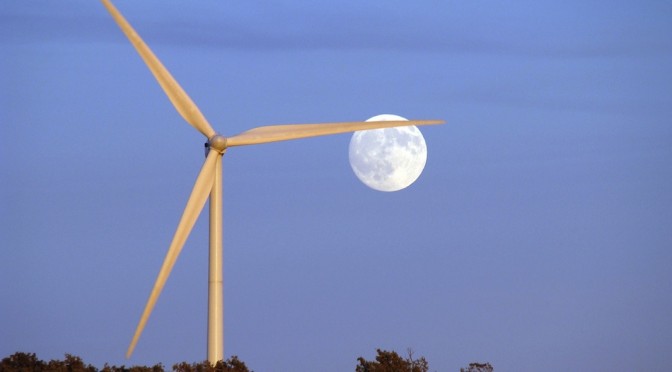The 600 MW wind farm is projected to cost about a$2bn and would consist of 200 wind turbines. King Island wind farm.
Renewable energy provider Hydro Tasmania announced earlier this week its intention to investigate TasWind, a 600 megawatt wind farm consisting of around 200 turbines likely to be located on King Island.
The idea is to sell and transmit electricity generated into the National Energy Market via a high-voltage direct current underwater cable across Bass Strait, with a landing point in Victoria.
Should it go ahead, the company estimates the wind farm will produce around 2,400 gigawatt hours of renewable energy for the national market – enough to power 240,000 homes, represent more than five percent of Australia’s Renewable Energy Target and reduce the amount of carbon entering the atmosphere by around 1.9 million tonnes per year.
While stressing the proposal is in early stages, Hydro Tasmania says it would provide significant benefits for King Island. In addition to opportunities in construction – it is expected to produce 500 jobs at peak construction and 10-20 ongoing jobs during operation – these would include likely upgrades to the port, upgrades to many roads, more airport traffic, opportunities to develop better communication services (a fibre connection with mainland Australia will be required) and higher levels of international exposure, which may support the ‘Clean Green’ brand.
It may be the smallest state in Australia, but if all goes to plan, Tasmania will build what the government claims will be the largest wind farm in the southern hemisphere.
The $2 billion project is expected to create 500 jobs over a two-year construction period and represent what the government says will mark the island state’s largest ever infrastructure development.
Still, company chairman David Crean stresses the proposal will be subject to extensive community consultation.
“The project will only proceed to full feasibility if the majority of King Islanders are in favour,” Crean says. “That is why we are embarking on a consultation process that aims to set a high standard nationally for engaging with local communities on major renewable energy projects. Such a project would also require extensive and detailed social, economic and environmental investigations, as well as regulatory approval at both state and federal level, before it became a reality.”
The state government has welcomed the proposal, with Premier Lara Giddings saying it represents an important first step toward securing a second Basslink cable between Victoria and the Tasmanian mainland.
“We are looking at the biggest single infrastructure project in Tasmania’s history,” Giddings says. “It is still in the early stages but this is exactly the kind of forward thinking that will deliver the new jobs and opportunities we are striving for.”
Should the project proceed to full feasibility, work will commence in April next year and would be complete by 2015. Following approvals and design, construction would be expected to begin in 2017, with the facility to become operational in 2019.
Provided it receives the green light, the company says it will seek funding through joint venture private equity as well as investigating Commonwealth strategic funding operations.
Though King Island, with its exposure to the ‘Roaring Forties’ – a world class wind resource – is an ideal location for hosting the turbines, the company says the location for the project is yet to be confirmed.
http://designbuildsource.com.au/




